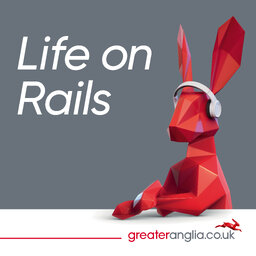How To Buy, Clean and Drive a Train
Listen to this first episode of Greater Anglia’s new podcast to discover some interesting nuggets about life on rails. Find out how trains are made, how they’re kept clean and sanitised, and why leaves on the line are like black ice on the road. Discover which destination we recommend to YouTuber Geoff Marshall, and how you can get the cheapest fares.
We’d love to hear from you, please tweet us at @GreateAngliaPr #LifeOnRails. Be sure to subscribe to the podcast as well, and visit www.greateranglia.co.uk/podcast to discover more.
 Life On Rails
Life On Rails


